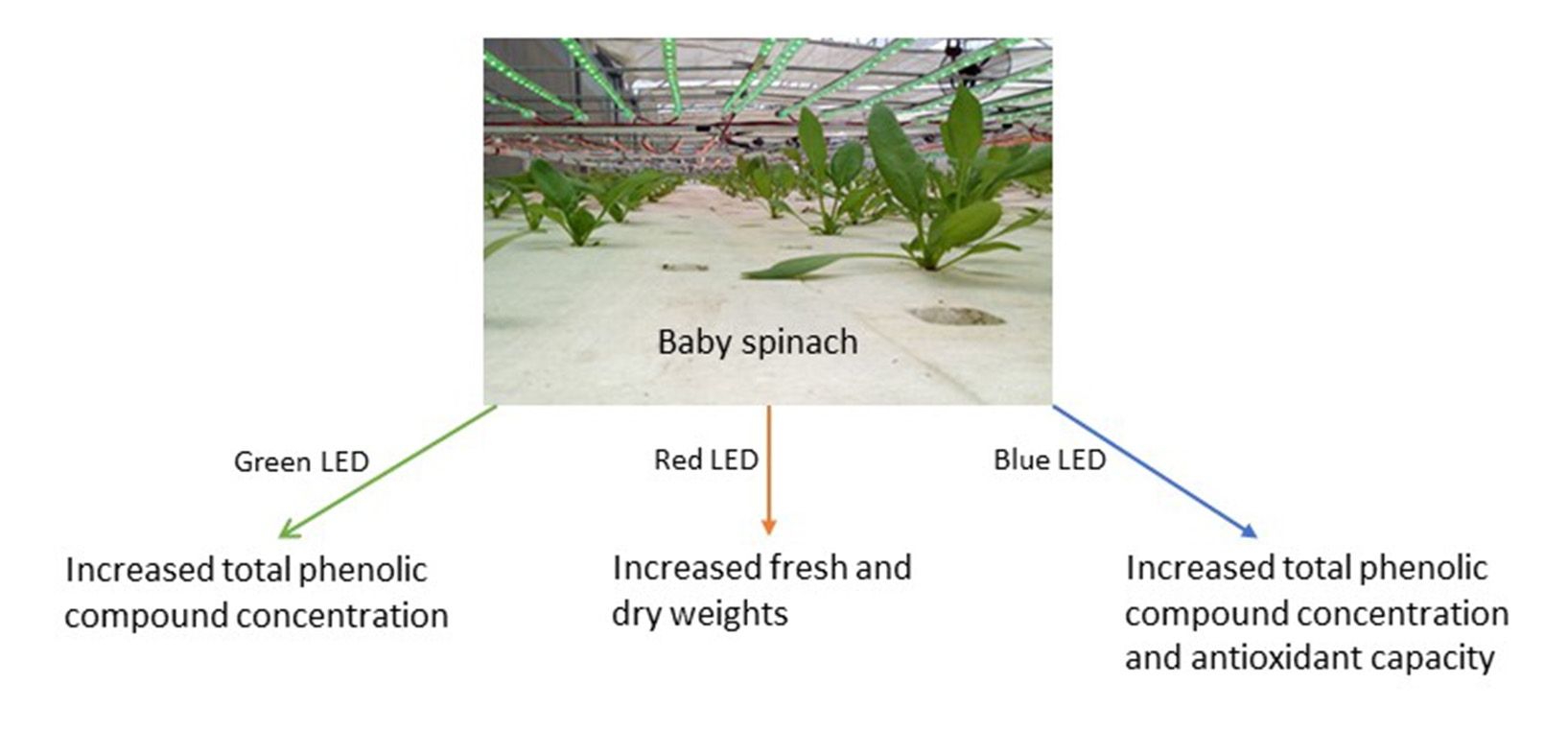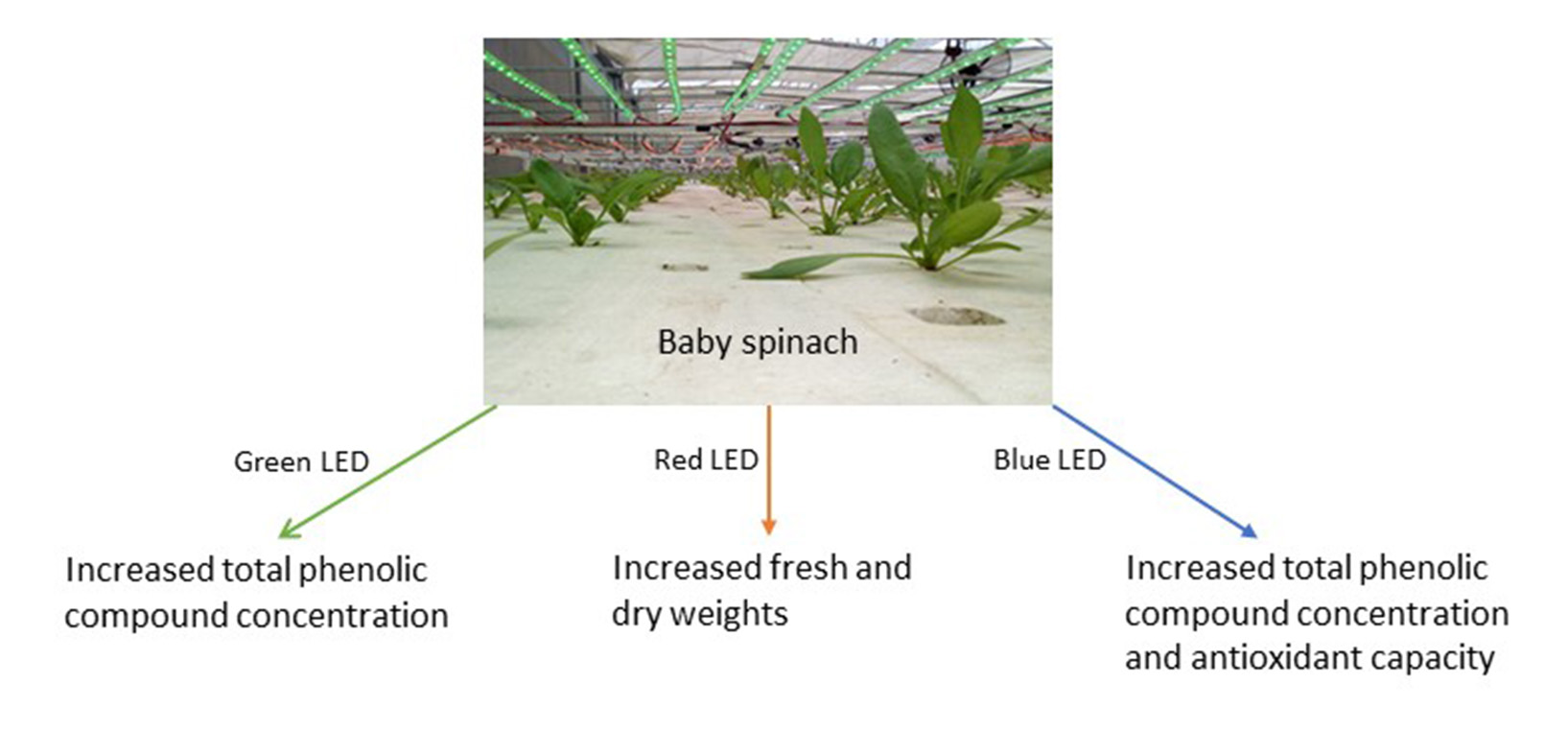Effect of blue, green or red LED light on the functional quality of spinach (Spinacia oleracea L.)
DOI:
https://doi.org/10.48162/rev.39.010Palabras clave:
luces LED, biomasa, espectros, capacidad antioxidante, sistema hidropónico, espinacaResumen
The present study employed white (W), blue (B: 468 nm), red (R: 629 nm) and green (G: 524 nm) monochromatic LED lights for 26 days, from 11:00 to 18:00 (7 h per day), with a average of photosynthetic photon flux density (PPFD) of 26.00 m-2 s-1 on two baby leaves of spinach (Spinacia oleracea L.) cultivars (Falcon F1 and Viroflay) grown in a hydroponic system. Regardless of the cultivar, the fresh and dry weights were positively influenced when the plants were irradiated by R-light in comparison to W-light. Independent of the cultivar, the leaves treated with B-light reached a significantly higher phenolic compound concentration than plants irradiated with W-light. With respect to antioxidant capacity, plants treated with B-light showed a significantly higher antioxidant capacity than those treated with W-light. According to the results, the use of LED lights is a promising technique for the production of antioxidant compound-enriched vegetables.
Highlights
- The fresh and dry weights were positively influenced when baby leaves spinach were irradiated by red LED light.
- Baby leaves spinach treated with blue LED light reached a significantly higher phenolic compound concentration and antioxidant capacity.
- The green LED light increased total phenolic compound concentration in baby leaves spinach.
Descargas

Descargas
Publicado
Cómo citar
Número
Sección
Licencia
Derechos de autor 2021 Revista de la Facultad de Ciencias Agrarias UNCuyo

Esta obra está bajo una licencia internacional Creative Commons Reconocimiento-NoComercial-CompartirIgual 3.0.
Aquellos autores/as que tengan publicaciones con esta revista, aceptan las Políticas Editoriales.











.jpg)




